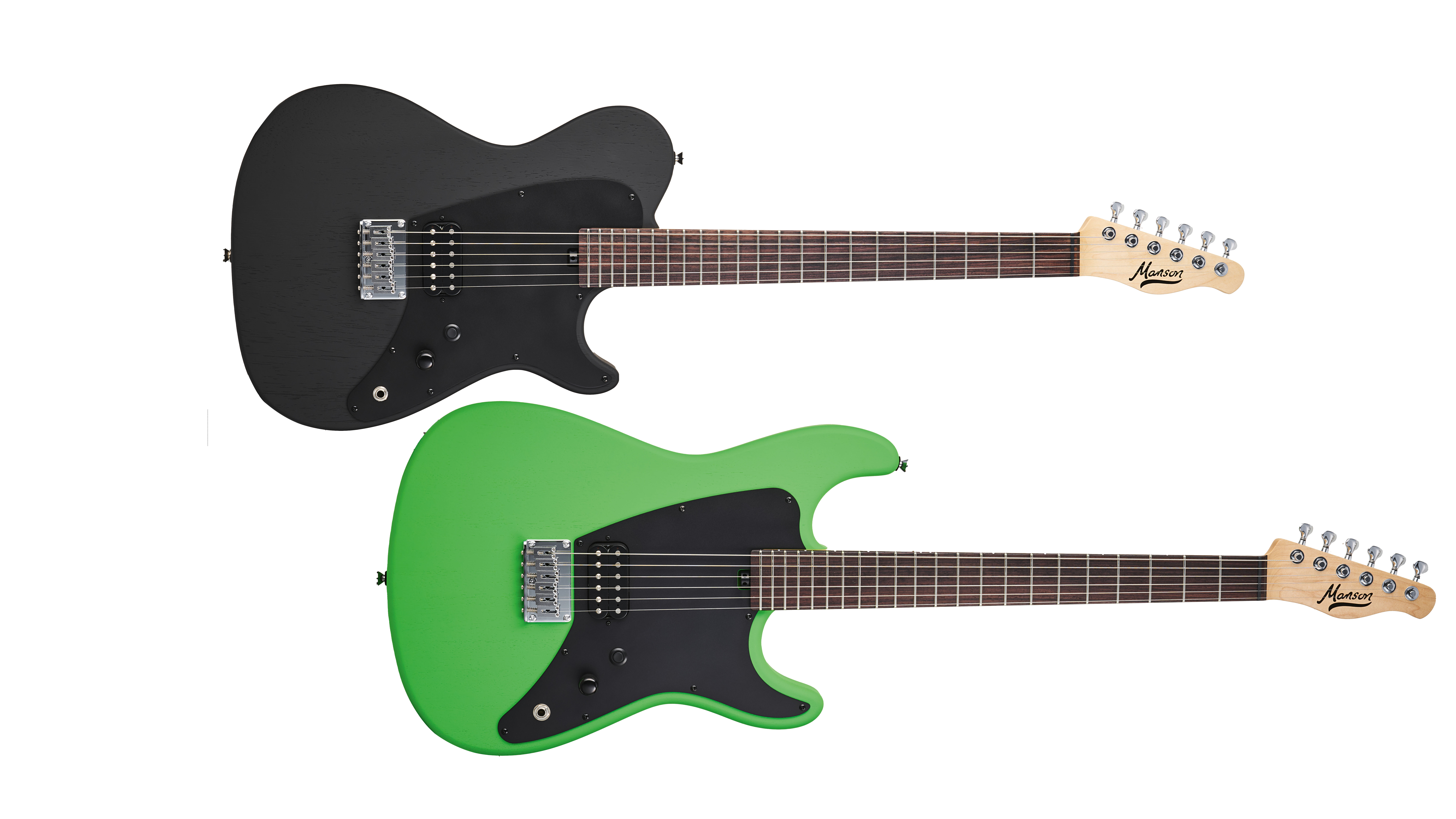
Manson Junior MA and Verona review: What are they?
Though still building production and custom guitars at its Devon facilities, Manson Guitar Works has never made a secret of its intentions to make its electric guitar designs more accessible to players. Matt Bellamy's move from customer to owner has only intensified that desire. But while MGW's successful collaborations with Cort like the MBC-1 Matt Bellamy Signature were produced over in the latter's Indonesian Cor-Tek facilities, these new Juniors are made in the West Country of England like Manson's higher-end models.
Priced around the mark (with a Mono case worth £150 included) that we're seeing some Mexican Fender and even Epiphone guitars selling for now, the Junior MA and Verona's release feels like a strong statement from the Devon brand. The MA is a familiar shape closely associated with Manson, and especially Bellamy's guitars, but the take on Manson's new Verona Sky S-type signals a new avenue for the British brand – and a shape first seen being roadtested by Bellamy with Muse on their Will Of The People tour. Elsewhere, both guitars have the same specs so I'm taking a look at them together.

Manson Junior MA and Verona review: Performance and verdict

One humbucker with series or parallel options, one volume control and a killswitch; these guitar look streamlined but there's the promise of depth for the one-pickup format here. The lack of tone control puts them more in the Jim Root school, with Satin open pore finishes that are slick but understated.
While the Dry Satin Black has the familiar Manson look, the Neon Green Verona here pops vibrantly in a way that reminds me of the Jackson American Series Soloist SL3's Slime Green. And with the broader take on an S-type body, the Verona feels like a callback to an era when Charvel and Jackson dominated the US rock scene's stages. But we're safe from Floyd Roses here.
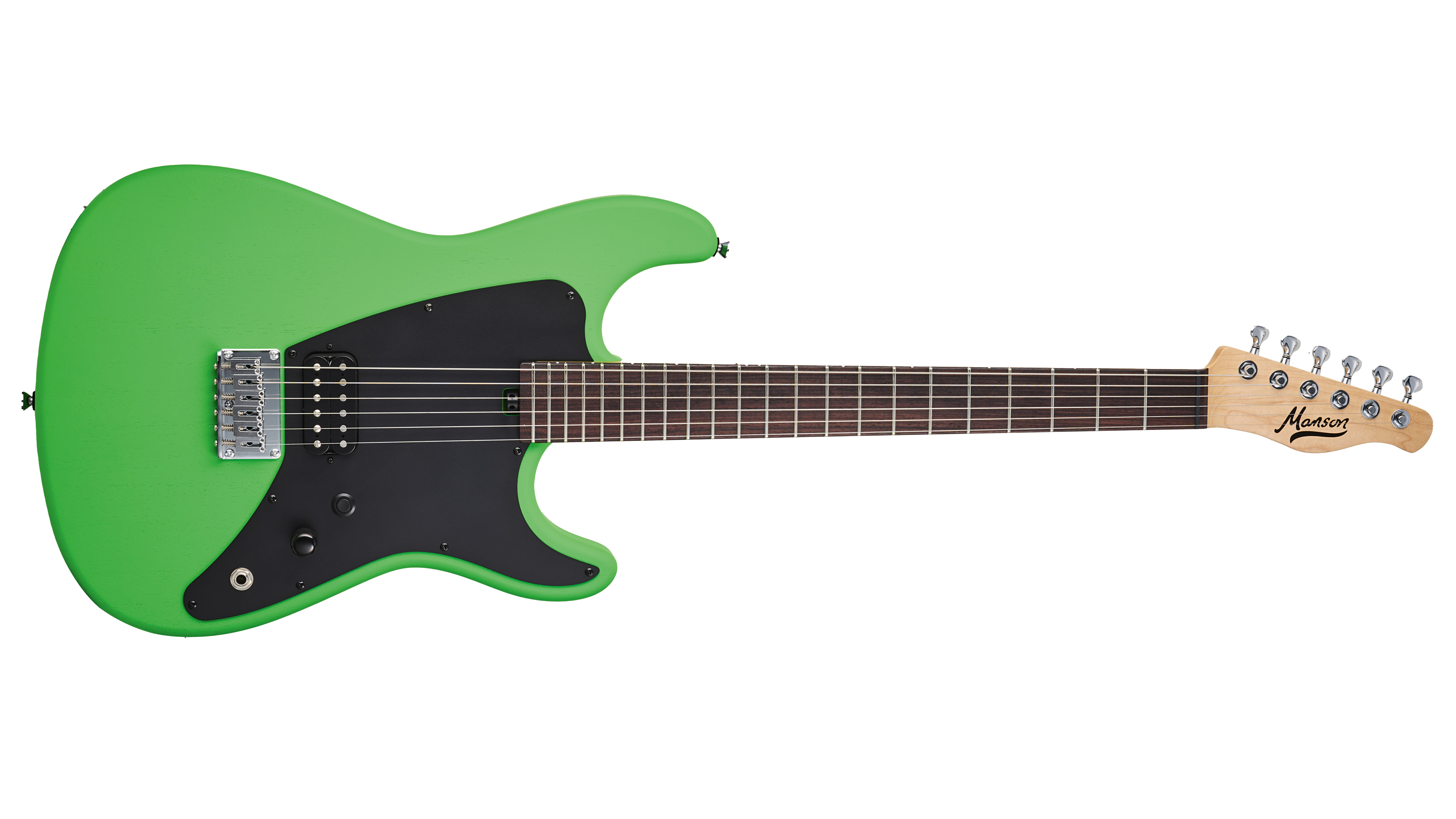
The anodised scratchplates are a stylish, stealth touch to proceedings. That continues with the hardware choices; a Gotoh hardtail bridge Gotoh GTC101 and 510 Machinehads are tried and true quality for a workhorse electric guitar. Though I can't help wondering if the look might be even more effective if they were black.

The body wood here is obeche, a Wester African wood that's described as being lightweight. And when it comes to the MA that we've been sent, that's almost an understatement! At 5.8lbs it's the lightest solid body electric guitar I can recall reviewing, but the build is so clean and sleek it absolutely doesn't feel toy-like.
I'm from the school of though that doesn't subscribe to the heavy guitars = better or vice versa. There's too many variables between guitars, as we'll find out. But I do prefer lighter guitars in general for comfort.

The build quality of both guitars is flawless
The Verona is 7.2lbs – same woods, different shape but still a significant difference. Further underlining just how much guitar builds can vary in weight between examples. It's still relatively lightweight but yes, the difference surprised me.
The build quality of both guitars is flawless; the attention to QC we've come to expect from the Devon workshop. And there's a peace of mind with that that shouldn't be overlooked. But they feel like finely tuned high-grade guitars; the bodies resonate against you as you play them acoustically, with the belly carve enhancing the experience. This is promising for a bolt-on guitar – and it bears out later.
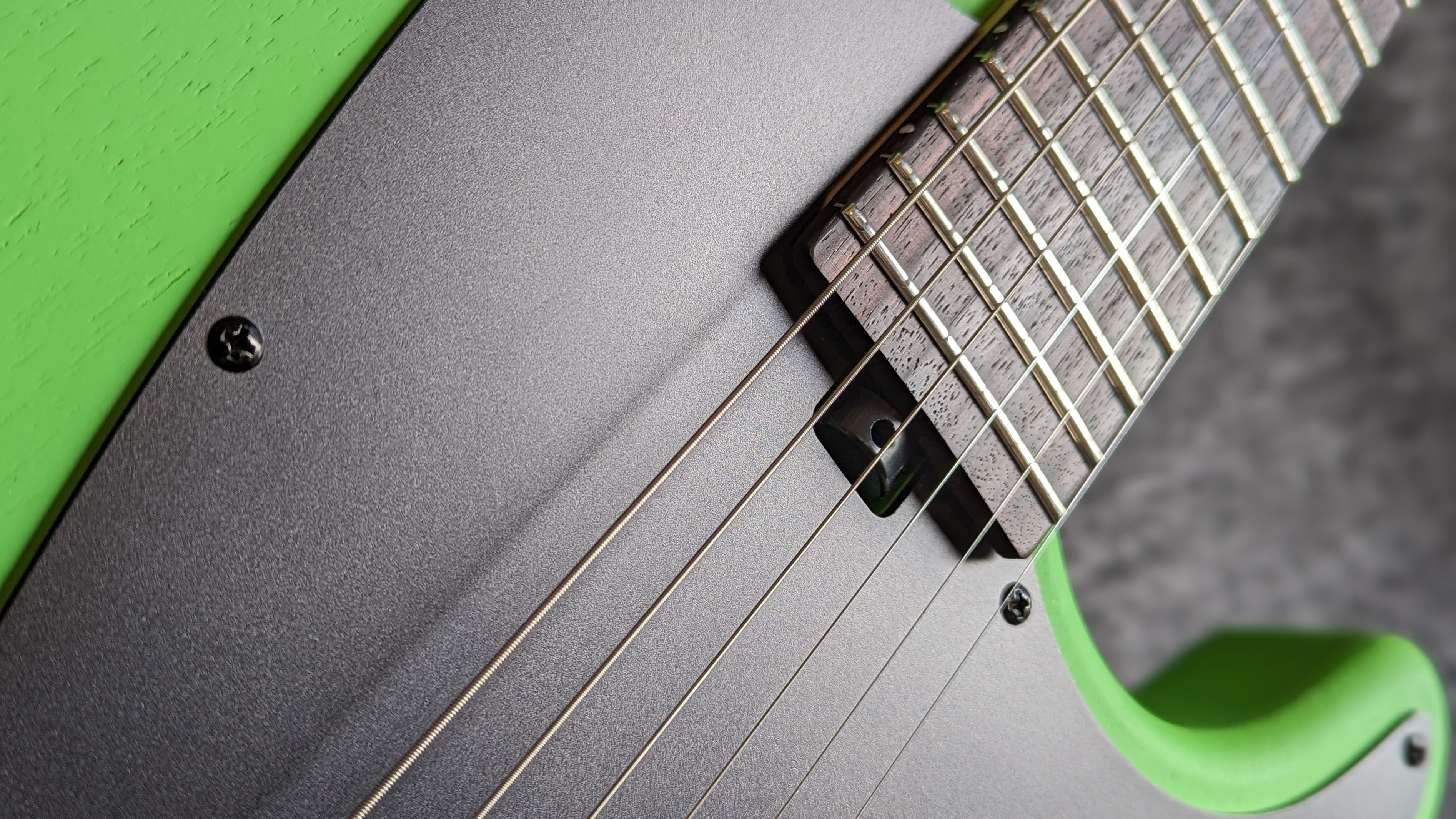
Compared to a polyurethane treatment, the open pore finishes here will pick up dents and dinks easier along the way the more you play and enjoy these guitars. But in my experience with a Gibson Faded SG Special over the years, they'll wear it well and add to their character. With the satin finish on the neck too, it adds to a welcoming feel in the hands.
The rich, dark brown hues of rosewood 'boards are always a welcome sight, and paired with the satin finish of the maple necks the feel is as good as the look. The minimalist style elsewhere extends to the decision to have only side fret markers. The most important placement for players anyway.
The Manson soft V neck profile and 12-inch radius will unsurprisingly be the biggest deciding factor with the playability appeal of these guitars. As guitar necks should be. If you're new to the brand, it feels a lot fuller than a Fender modern C for me and a middle ground to modern Charvel, without the compound radius found on much of its guitars and the likes of Manson's own META MBM-1. It's very subjective but I don't find this neck spec as fast as some will, but I admit my background in the 9.5" radius / C-shape carve comfort zone is showing here! Many players will feel right at home with the Junior, and what it does encourage is clean and precise runs, with space for chord articulation.
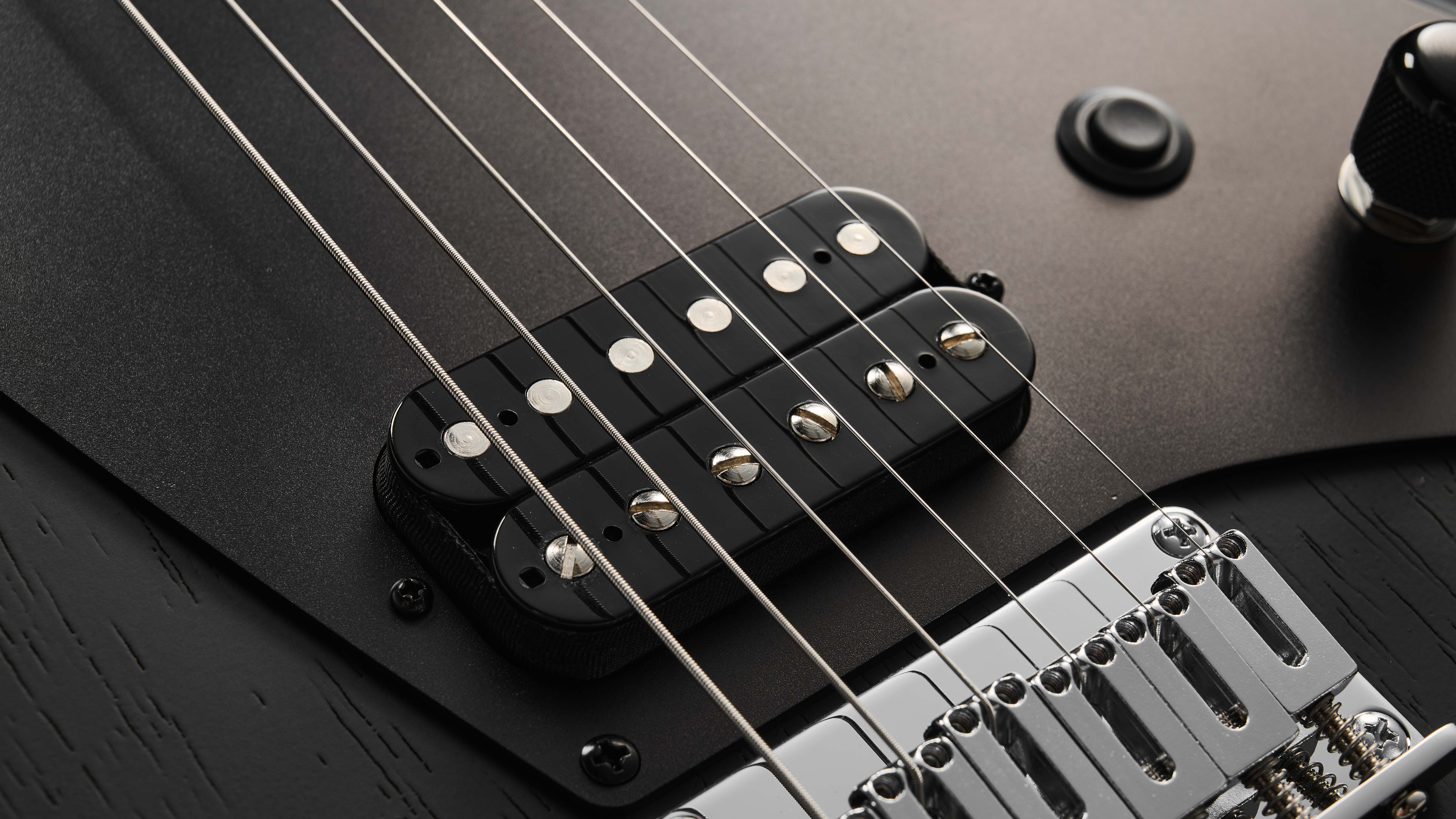
The high-end balances reliable cut with an airier quality than you may be used to from a modern humbucker
Which is just as well, because the 9.5k Dirty Rascal humbucker here has a lot to offer on that side. Designed by Manson's pickup guru Simon Thorn, the high-end balances reliable cut with an airier quality than you may be used to from a modern humbucker; it adds width and metallic edge, allowing chords to breath out. The sense of articulation under the weight of gain really shines elsewhere, allowing low-end arpeggios to brood and chew menacingly without a mushy aftertaste.
Both guitars offer notably impressive sustain too, surely a further reflection of the experienced craftsmanship behind them. But the question is, are these Juniors really meant for heavier styles? They certainly thrive there but the one pickup scenario will draw things out of you to reveal value elsewhere.

The volume control is your friend – offering an effective and sensitive tapering of gain with a quality tube amp or amp modeller. But that same control is a Mojo switch that can be pushed to reveal a parallel mode. Rather than the halfway house of a coil split that usually sees a notable drop off in the low end and general presence by its very architecture, parallel wiring uses both coils of the humbucker in – surprise – parallel rather than the series of the standard mode. The effect keeps the hum-cancelling but accentuates the bright and airy character we detected earlier.
It's no substitute for a single-coil, but it's not trying to be either – I think of it as a very different humbucker experience
It's no substitute for a single-coil, but it's not trying to be either – I think of it as a very different humbucker experience. It still sounds full for chordwork but with appealing clang when driven. Through amps like a Fender Deluxe Reverb you do long for a tone control to draw on though for some added control, and that may be something bluesier players will lament here.
Especially as the presence of a killswitch could be a fun diversion with limited longterm appeal or a hugely underrated dynamic tool, depending on who you ask. But it's become something that Manson (especially with the Bellamy connection) has often embraced and maintains a stealthy presence on the scratchplate.
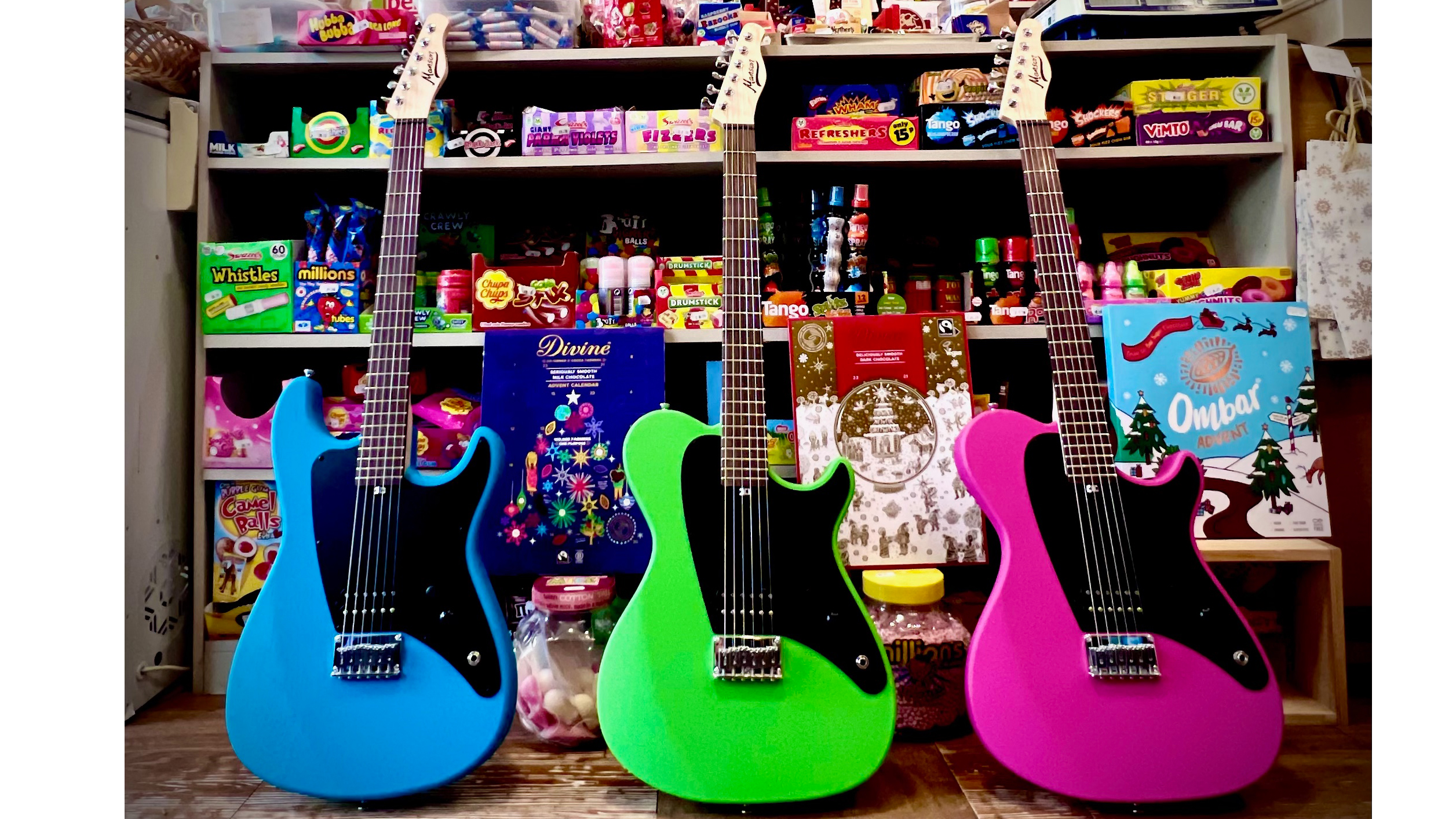
There's plenty of time for Manson to explore further specs beyond these initial models anyway. And I hope they do, because this is a great start at a persuasive price for a British-made guitar from a proven brand with undeniable attention to quality.
MusicRadar verdict: It shouldn't be a surprise that Manson's high standards are very much evident here. The Junior series proves to be a great workhorse for heavier styles, but there's a reassuring depth to be mined with the parallel mode here too.
Manson Junior MA and Verona review: Specifications

- ORIGIN: UK
- TYPE: Six-string solid body hardtail electric guitars
- BODY: One-piece Obeche
- NECK: Maple, Manson Soft 'V'
- FINGERBOARD: Rosewood, 12-inch radius
- FRETS: 22, Medium Jumbo
- NUT: Graphtech TUSQ, 42mm/1.65" width
- SCALE LENGTH: 25.5" (648mm)
- PICKUP: Manson Dirty Rascal (9.5k, Alnico V)
- CONTROLS: Volume push/push series and parallel modes, kill button
- HARDWARE: Gotoh 510 tuners (1:18 ratio), Gotoh GTC101 bridge (both chrome)
- TEST GUITARS WEIGHTS: 5.8lbs / 2.3kg (MA), 7.2lbs / 3.2lbs (Verona)
- CASE: Mono M-80 sleeve bag
- FINISH OPTIONS: Open Pore Neon Green (as reviewed), Miami Blue, Neon Pink, Dry Satin Black (as reviewed), Vivid Mustard Yellow
- CONTACT: Manson Guitar Works







